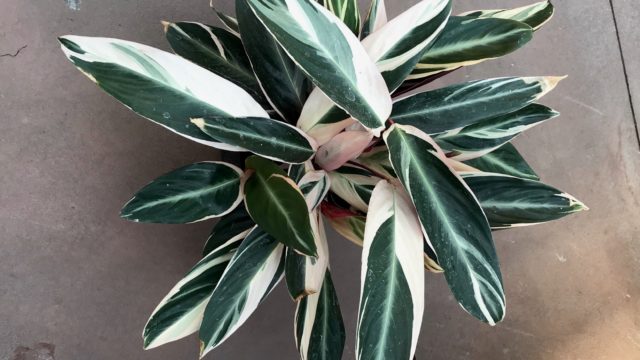
Welcome to the heavenly list we’ve all been waiting for. Nowhere could I find a list of variegated plants safe for cats and dogs, so I made one myself. Since variegated Monstera albos and Pink Princess philodendrons are all the rage, that doesn’t help those with pets who eat plants. So I found some nontoxic plants, just for you. With this list, we can now all bask in variegated plant heaven, even alongside Mittens the cat and Bert the dog.
Calathea White Fusion
Calatheas are gorgeous but it’s no secret they’re a tad dramatic. Understanding their care and needs is crucial before an impulse buy occurs. For my full guide on Calatheas, see this very helpful post. In short, the trick is humidity and rainwater. Without enough humidity (they make great bathroom plants) those variegated leaves crisp up. If you water with tap water (with chlorine, fluoride, etc) all sorts of bad things happen. Keep these girls moist, always check for bugs, and keep in indirect sunny spots.
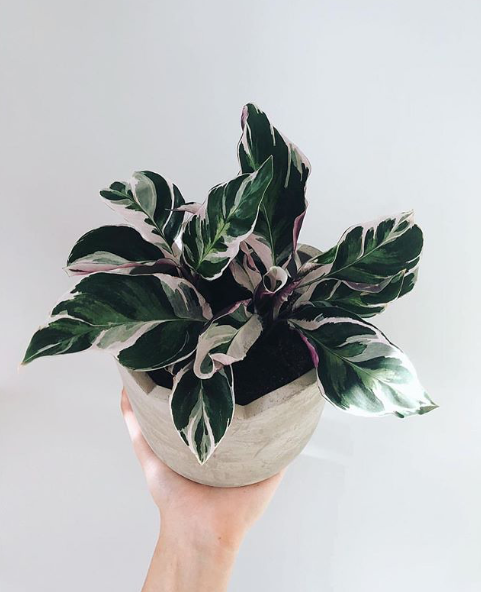
Watermelon peperomia
Peperomia are one of the best pet friendly plants and one my my favorite plants EVER. There are a lot of options, but my top variegated Peperomia are Peperomia obtusifolia, Watermelon Peperomia (peperomia argyreia), and Rainbow Peperomia (peperomia clusiifolia). Watermelon peperomia are easy to grow and prefer bright sun. Keeping all peps lightly moist is best, but they tolerate drying out too. Beware of scorching sun and harsh temperatures – both can cause damage leaves. And no one wants that.

Hoya carnosa
My Hoya carnosa is my newest baby and I’m in love. Her leaves start out pink then transform to painted green and white which is just lovely. Hoyas are just really lovely. Keep these ladies in bright light and treat like a succulent. Be sure to let them dry between waterings and keep them away from heaters and drafts. If conditions are right, they’ll bloom itty bitty flowers that smell like chocolate. Omigod.
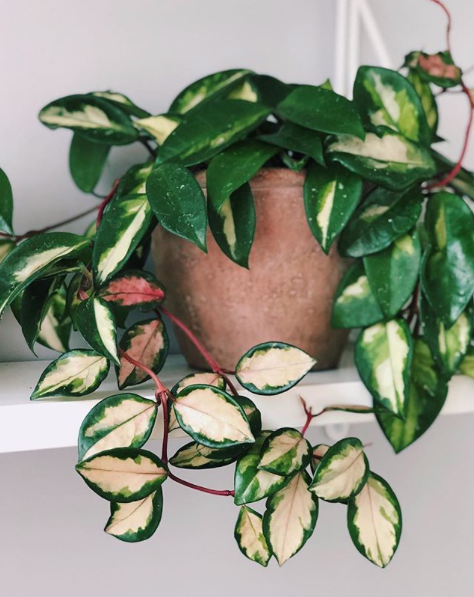
Stromanthe triostar
So, for a long time, I didn’t know what Stromanthe were and I never asked. I just assumed these pretty boys were were toxic to pets and moved on my merry way. Stromanthe are actually a second cousin to Maranta and Calathea, and are also safe for pets. Care is similar too; they are fussy and love humidity and bright, indirect sun. Sunlight keeps variegation beefy – Stromanthe triostar is gorgeous, with deep magenta, purple and blush tones. Keep these lightly moist with filtered water but never let them in hot, direct sun.
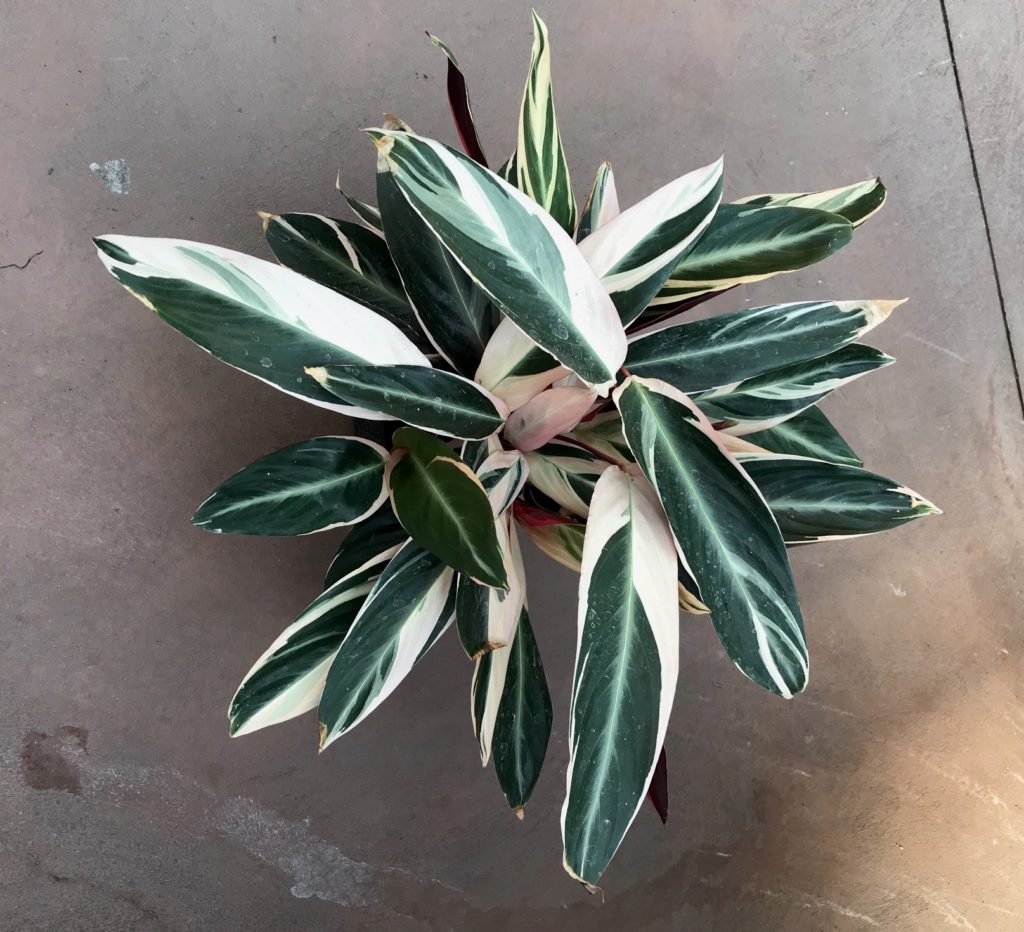
Ctenanthe
Speaking of Stromanthe, another Maranta family member are Ctenanthe. Often confused as a Calathea, these are another gorge pet friendly plant. Care is similar to Stromanth and Calathea – keep moist and house in a plastic pot. Some of the most common Ctenanthe varieties are Ctenanthe oppenheimiana, the more subdued Ctenanthe lubbersiana and Ctenanthe setosa.
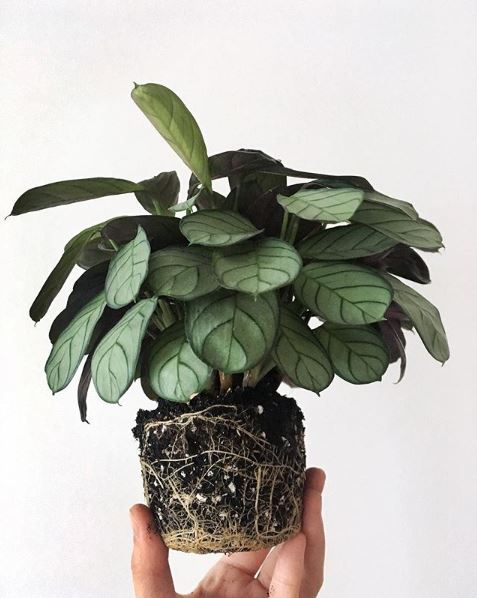
Purple waffle plant
I found these puppies while I was researching this post and was really taken aback by their coloring. There are a couple types of purple waffle plants, known more familiarly as Hemigraphis alternata. All varieties are safe for pets, but this watercolor babe is just lovely. I named him Martin and he likes to be kept lightly moist and in partly shaded areas. These guys are very similar in temperament to Fittonia and actually do well in water culture.
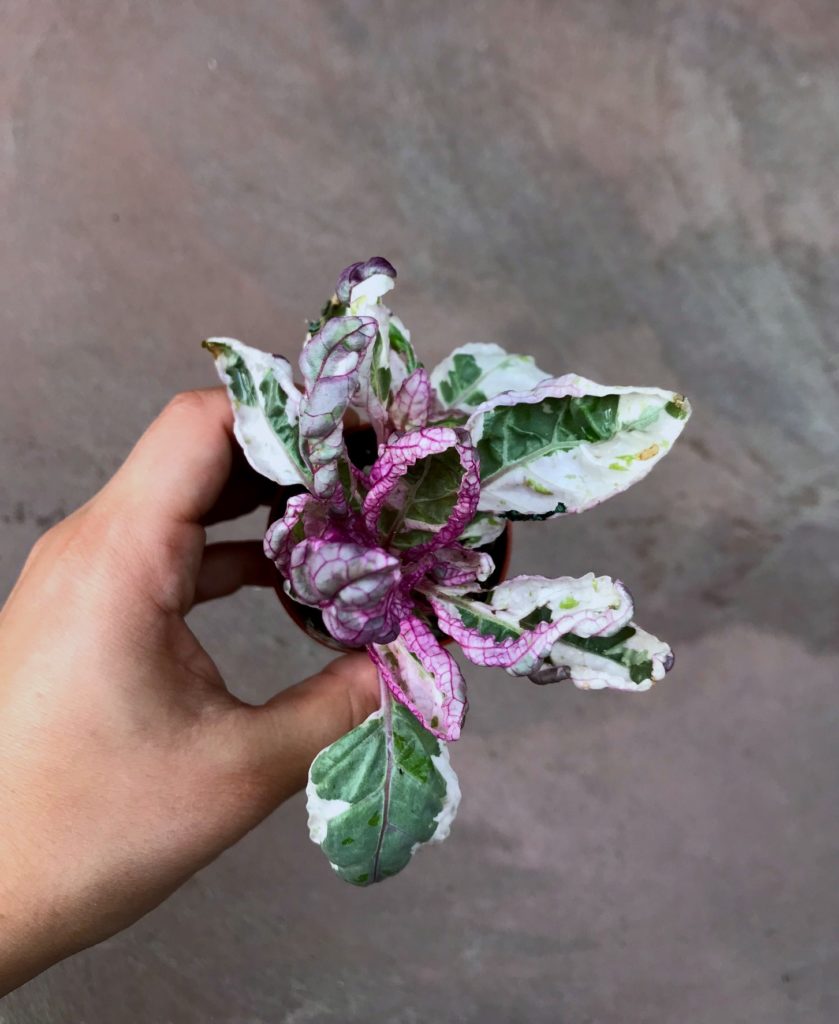
Ficus tineke
A sister of Ficus elastica, Ficus tineke is basically a painted rubber tree. Care is the same, leaf shape is the same, they are just a tad more temperamental. Leaves start out bright ruby pink and change to light pink, green and white. Yes I know, rubber trees are not completely non-toxic, and I talk more about why these can be considered pet safe in this post. These guys like bright sun and to lightly dry out between waterings. I have had some issues with my Ficus tineke. Spidermites and brown, crispy edges are common and just mean they need more humidity and moisture. I warned you they’re temperamental.
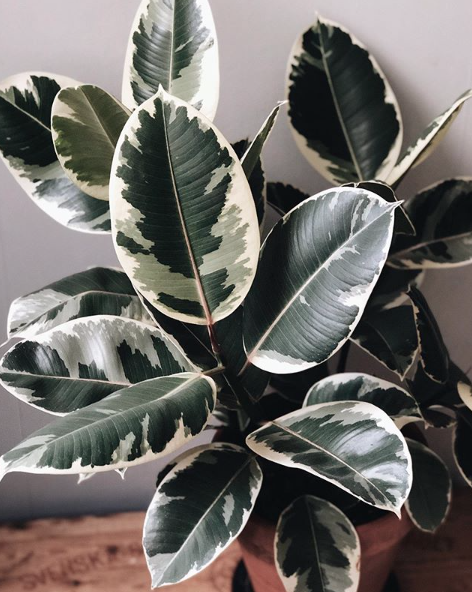
Swedish Ivy
Did you know Swedish Ivy is just a fancy name for Creeping Charlie – which is a straight-up weed. But who cares, Swedish Ivy is actually really pretty and non toxic to cats and dogs. The variegated variety has either a golden or bright white center and evergreen edges. Personally, I think it looks rather festive, so I usually suggest Swedish Ivy as a replacement for toxic plants around the holidays. Care is pretty simple, keep the ivy in evenly moist and well draining soil and in sun to partly sunny windows.
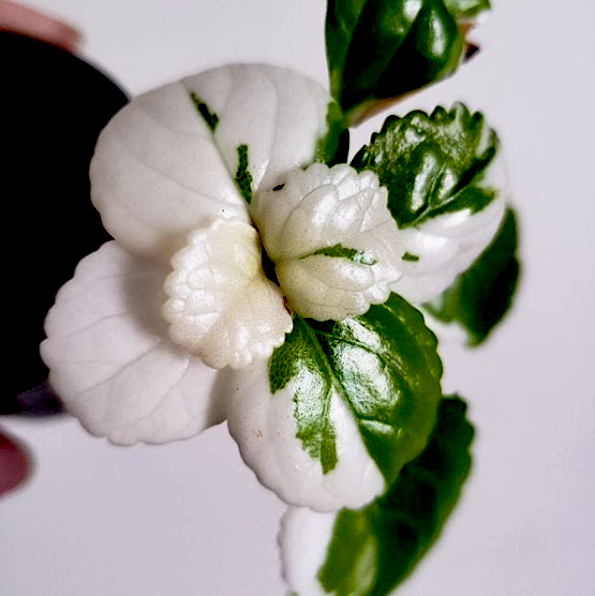
This post contains affiliate links.

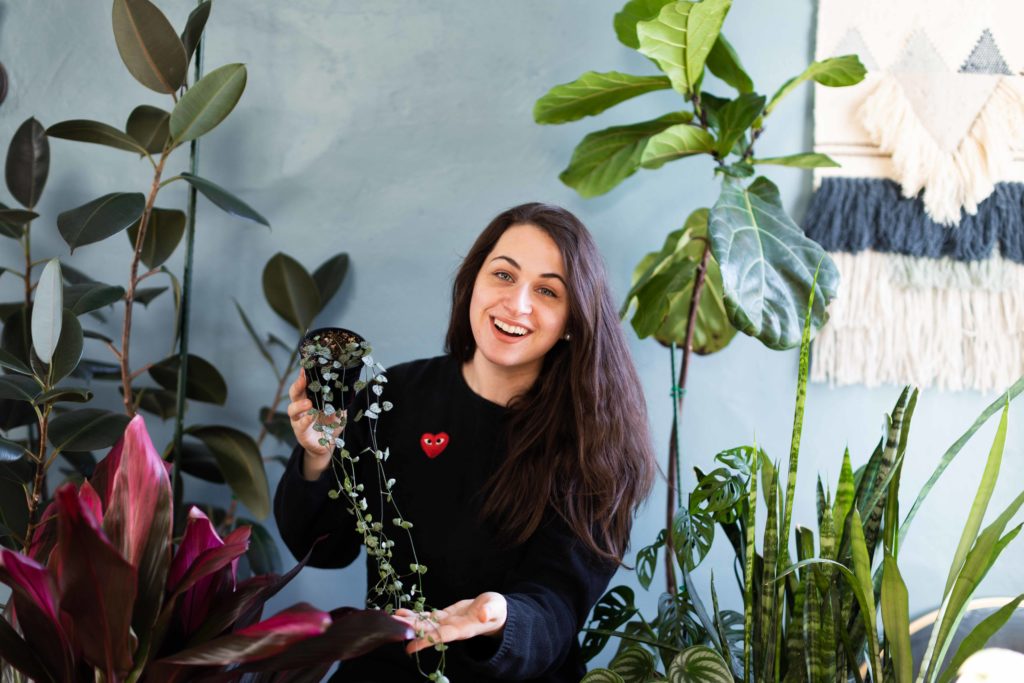

Hello! This is indeed a beautiful list of plants, but one important word of caution: Just because plants are related to non-toxic plants does NOT mean they are also non-toxic. I’m speaking of your comment on Stromanthe triostar being a cousin to safe plants. Tomatoes, bell peppers and eggplants are all in the nightshade family which includes several DEADLY varieties. Please consider removing or adding a word of warning for any plants which have not been confirmed non-toxic by a reliable scientific authority. Happy planting!
Hi Mags – totally agree! I check with the ASPCA before I publish any content on pet safe plants.